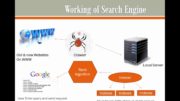Discover the words that will provide the highest ranking and best quality score to boost relevance and traffic to your website. These rules still apply for 2017 and will likely continue to apply beyond.
The three main factors we will be looking at are:
1. The words that produce the highest rankings
2. Negative footprints & positive footprints
3. Techniques and examples on how to find these golden words
But before we start, one of the main rules to follow is to forget about the old rules that no longer work… you know the rules I am referring to, those rules that everyone is applying and BECAUSE everyone is applying them, they no longer work.
For example, do not keyword stuff, do not word stuff & do not repeat the same thing over and over again.
But rather we want to optimise as much as possible while writing naturally for the user. Remember, Google is trying to replicate human behaviour, so why not write for humans (after all it is humans that are going to be finding your site… but ONLY if Google ranks it)
The basics:
– Have a title that contains the keyword
– Have an H1 header in the article that is relevant to the keyword
– Add multiple sub-headers (H2s) that are relevant to the keyword. This increases the chances of ranking for related terms to your keyword too.
Now for the content and the words to choose to use:
– One tip is to search your keyword and see what the top 10 ten results on Google shows. If those results are on the first page of Google, then you will want to consider at the very least the sub-headers they have used.
– Then find related Wikipedia article(s) and note the major categories being discussed.
– Once again do a search for your keyword and at the bottom of Google’s search results look at the “Searches related to keyword”.
Writing the first draft:
1. The first paragraph of the article should contain a heavy amount of words relating to your main keyword. The reason for this is that Google will recognise these related words and recognise very quickly what your article is about, particularly as those words are related to your H1 header (I.e. your keyword).
2. Your exact keyword should NOT be over used in the article. Use it once, possible twice depending on the length of your article. However, be sure the keyword reads naturally and does not look like you have just randomly placed it anywhere within the content.
3. After the first paragraph, you can be less restrictive and write naturally about the subject matter.
For more information, watch the video.














